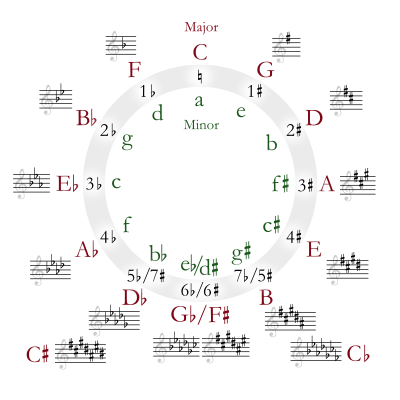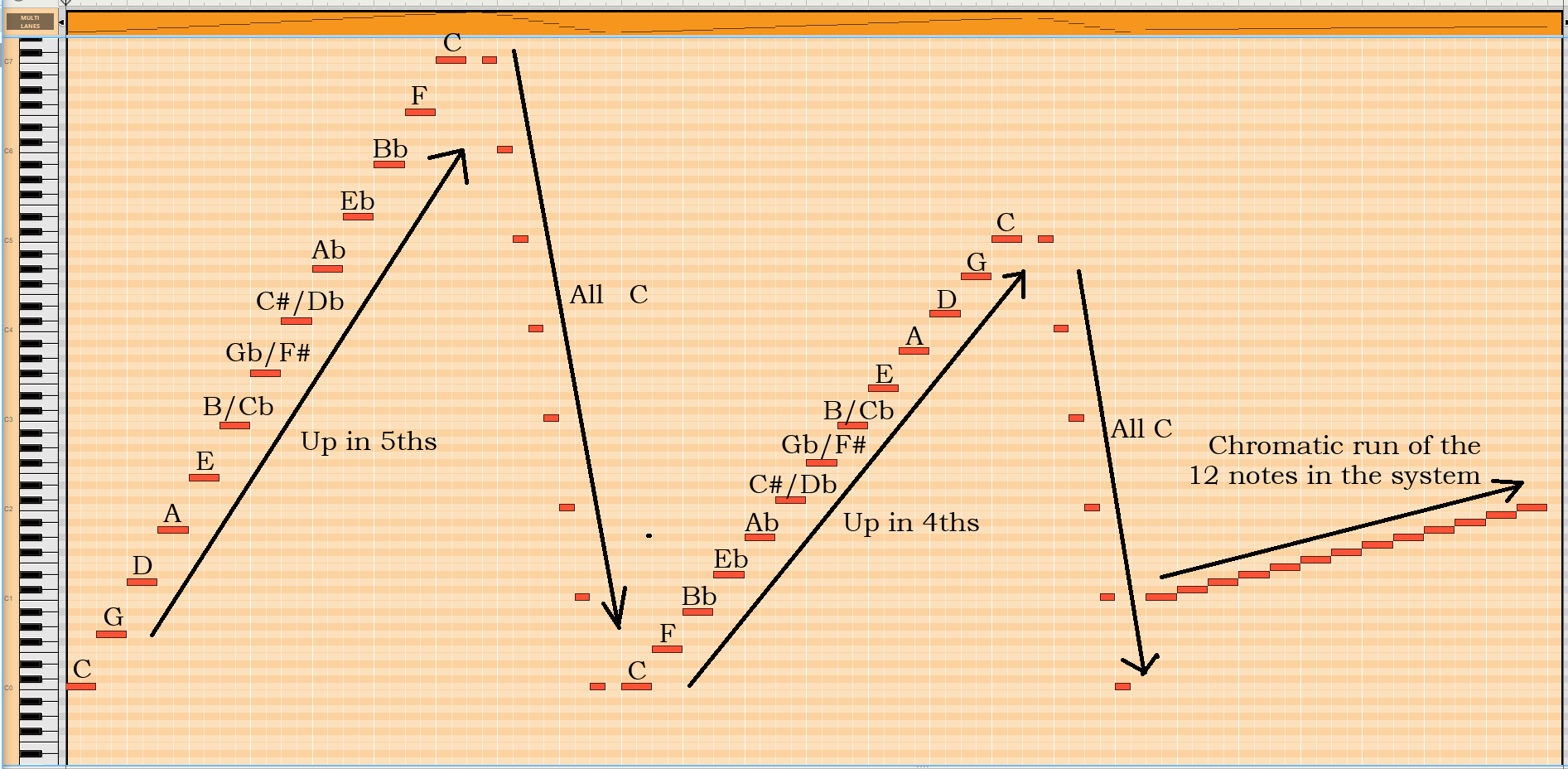I’m sorry for the onslaught of information, but here’s another wall of text.
I haven’t really gone into it in this thread yet, but the whole Western system and its 12 notes, is explained by the Circle of (Fourths and) Fifths. It is really the basis of everything mentioned above, and I should probably have started with this. One of my personal goals is to be able to memorise it, to be able to draw it out on paper at any time for reference, but I’m not really that skilled yet. I work most things out by ear, and I haven’t spent much time trying to learn how to read or write sheet music, because it’s not really a useful skill, unless you want to play music others have written, or want to write music for others to play.
It is constructed by starting with a note (it’s all based around the note C), then stacking 5th intervals until you get back to the same note again, or stacking 4th intervals until you get back to the same starting note. You end up with the same notes (12 in total) either way, but in different order. The notes you end up with are all the 12 chromatic notes we use in the Western system, but spread out over several octaves.
Here is an audio example I made. The first ascending line is the stacked 5th intervals, going from C (octave 0) to C (octave 7). The last C is hard to hear. It then descends using only Cs back to the low C.
The second ascending line is doing the same thing, but instead of going up in 5th intervals, it uses 4th intervals. It also descends in Cs afterwards.
The last ascending line is all the 12 chromatic notes included in one octave, starting from C (octave 1).
Here is the circle. It describes more or less everything about the system, and it is really mind-blowingly logical, once you grasp the basic concept. As you can see, it corresponds to my screenshot above; going clockwise, you get the notes that are separated by 5ths, where going counter-clockwise, you get the notes separated by 4ths.
I should make more use of it than I have, but as I’ve mentioned above, I do things more by ear, so I don’t care which notes are written as flats (b) or sharps (#). Though, if I want to actually write down correct notation for someone else to play, this becomes important.

I will elaborate a bit further on this later.





